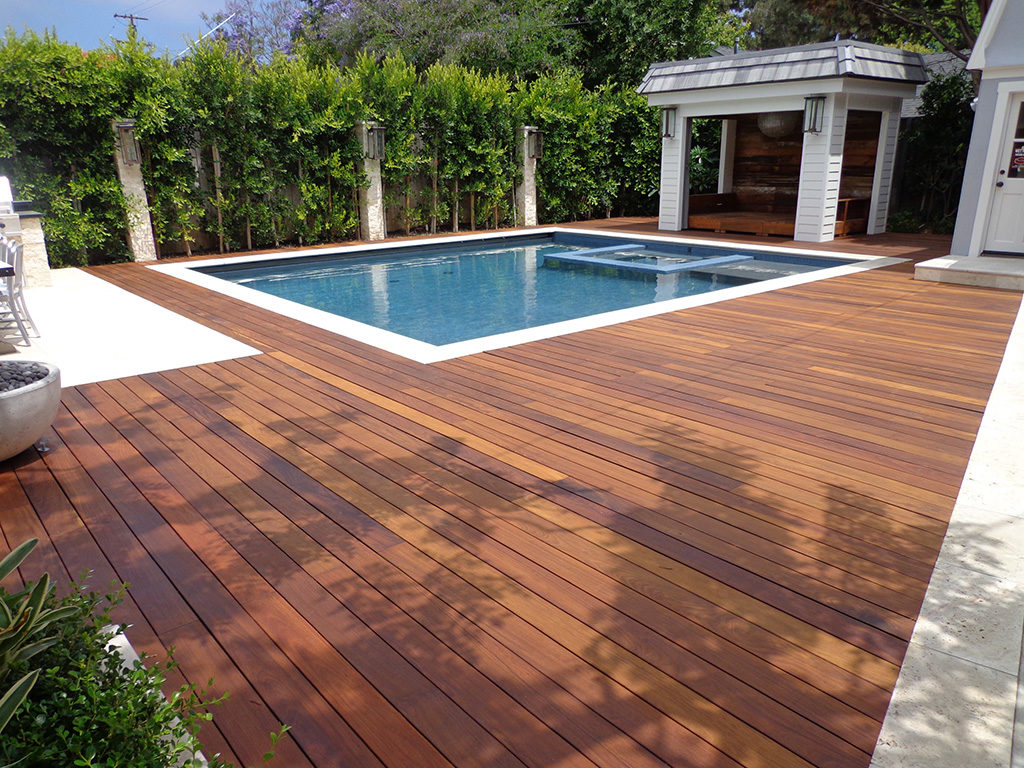How Long Does It Take for Ipe Wood to Turn Grey?
Ipe wood is popular for outdoor structures such as decks and patio furniture due to its impressive durability and breathtaking beauty. Fresh ipe has a warm reddish or olive brown hue that ages beautifully into a silver-gray patina. Many homeowners appreciate the natural patina of ipe and enjoy its silvery hue just as much as its younger brown tone.
If you’re installing an ipe deck or purchasing a home with ipe decking, it’s essential to understand the aging process for this wood so you know what to expect and how to care for it to get the look you prefer.
Characteristics of Ipe Wood
Ipe is a dense South American wood naturally resistant to rot, mold, and insects. It has a Class A fire rating due to its density, which makes it a safe choice for any home. Even unfinished ipe can withstand the elements for 15 years when you use it in the ground. When used for decking, ipe has an impressive life span of around 75 years. You should regularly clean and oil the wood to keep your ipe in optimal condition.
Ipe varies in appearance with darker hardwood and white or yellow-toned sapwood. It may feature dark black or brown stripes and paler yellow deposits. Ipe has a fine to medium grain that varies from straight to highly irregular. Each ipe board has a unique appearance, making your ipe decking a true work of art. It has a Janka hardness rating of 3,680 pounds, making it initially challenging to work with. So it’s best to purchase ipe lumber that’s already cut to the proper lengths if you’re building a deck yourself, as ipe can quickly blunt your tools.
Ipe wood dust irritates some people. This is rarely a problem unless you’re actively constructing a new project with ipe wood and sawing into it. Some people have reported skin and eye irritation, headaches, and even asthma-like symptoms when exposed to this dust.
Natural Aging Process of Ipe Wood
Just as ipe begins with various hues, so too will it fade into different shades of silvery gray. Ipe is considered a low-maintenance wood for those who don’t mind the gray hue. Fully weathered ipe has the natural shade of driftwood, which can be a very sophisticated element for your home. Ipe naturally fades when exposed to the sun’s UV rays, so you don’t need to do anything if you want your ipe to turn gray; it’s the natural aging process for this South American wood.
Time Frame for Ipe Wood To Turn Gray
Ipe will begin to fade to a gray tone immediately when installed outdoors. You’ll probably see a noticeable difference in hue in as little as three or four months. It may turn completely silver in as little as six months.
If you treat your ipe to try and prevent silvering, you may be able to hold this process off for about a year. However, you’ll still notice some silvering over that time. You must refinish your deck annually to keep the wood from becoming gray.
Factors Affecting the Aging Process
Ipe fades as a result of UV exposure. The more direct sunlight your deck receives, the faster your ipe decking will age. If your ipe is in a shady area, it may take longer to attain its full silvery patina, though this will still happen over time.
You should never attempt to gray out your ipe wood before installing it in the finished project. As the UV rays silver the wood, they also change the moisture content. When the boards are properly installed and fastened in your decking or other installation, their moisture content will change at roughly the same pace as one another, which allows the boards to shrink or expand together. Having the proper fastenings in place will prevent severe cupping or warping during this process.
Maintenance To Retain the Original Color
If you prefer that your ipe decking keep its original color, you can prevent much of the fading process with proper annual treatments. When installing new ipe wood, coat it with a UV protective finish if you want it to keep its original brown color and prevent it from silvering. You’ll also need to refinish your ipe regularly to maintain its brown shade long-term. This is a multi-step process that involves:
- Cleaning the wood: Some gray oxidation can be removed by scrubbing or gently power washing the ipe. This process also helps to remove dirt, grime, and other messes that naturally build up on outdoor decking over time.
- Sanding: Light sanding removes more oxidation and exposes the ipe wood’s original surface and younger color.
- Brightening: A commercial wood brightener will help bring out more of your ipe’s golden brown tones. This counteracts much of the graying and gets your ipe closer to its original shade. The brightener also helps remove mold or mildew stains on the surface of the ipe wood.
- Sealing: A UV protectant and sealant will help your ipe retain its refreshed look for a long time.
While you can keep ipe wood looking brown with regular maintenance, it’s important to note that you must complete the abovementioned steps about once a year to keep it in prime condition.
Professional Restoration for Ipe Wood
Ipe doesn’t suffer from diminished quality, durability, or longevity when allowed to silver. The only reason to keep it brown is for your aesthetic preference. Whether you let your ipe silver or not, you will enjoy the strength and durability of this wood long into the future. Keep your ipe in optimal condition by having it periodically restored by the professionals on our Teak Master team. We service the Southern California, area and can safely and effectively restore your ipe no matter what color you prefer.

